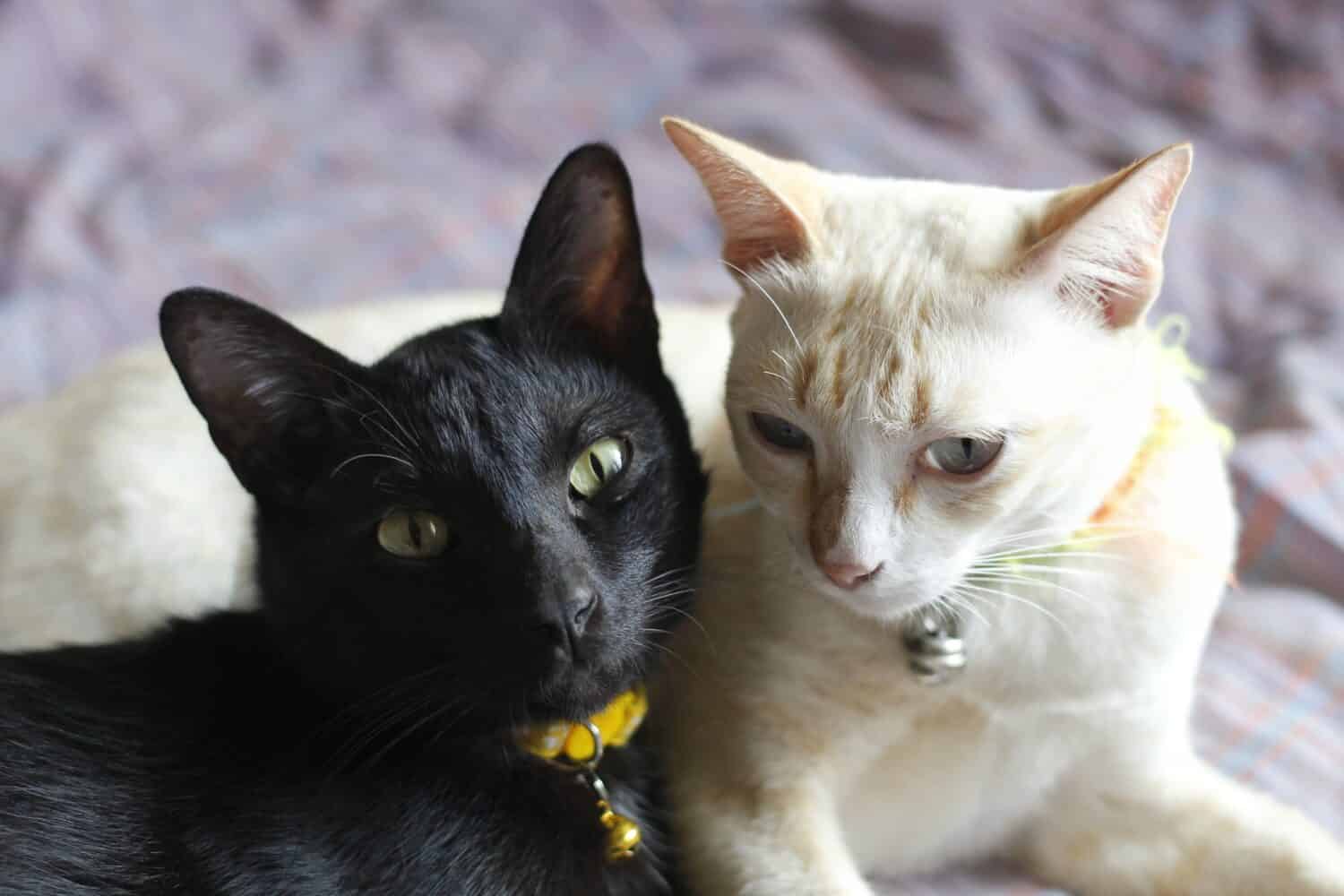Among the earliest domesticated animals, cats have provided humans with companionship for thousands of years. Humans have revered cats for their elegance, hunting abilities, and even their aloof natures. Most cat owners understand their own pet’s meows, but what about when cats communicate with each other? Keep reading to learn how cats communicate with other cats and what they are saying.
1. Tail Movements
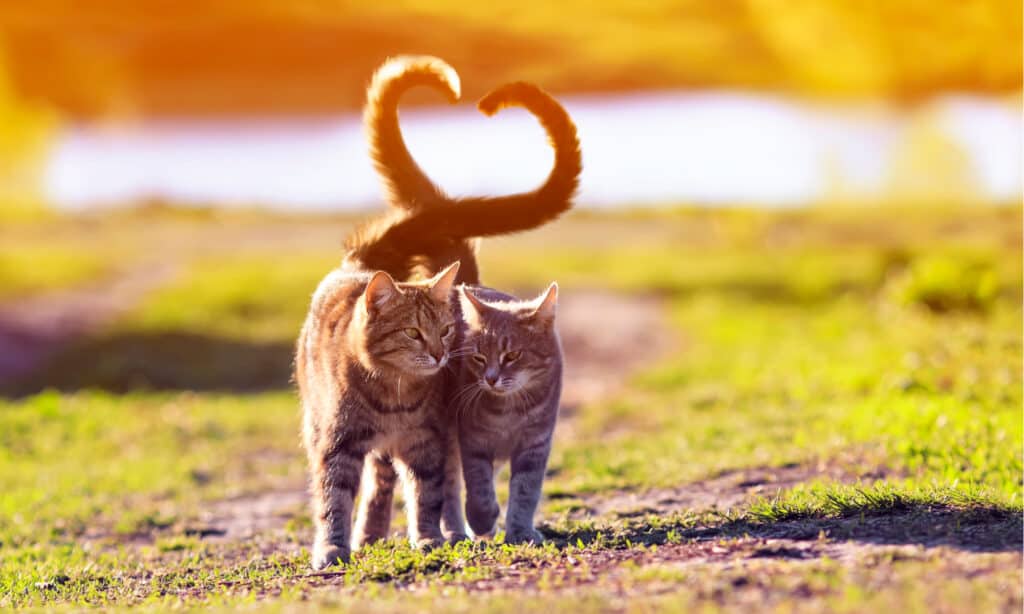
A cat’s tail is a part of its spine and can have 18-23 vertebrae.
©Bachkova Natalia/Shutterstock.com
Their long, distinctive tails provide balance while jumping and are also a primary form of communication between cats. When cats greet each other with their tails high, sometimes with a hook at the tip, they are expressing comfort and a willingness to socialize.
However, a cat will tuck its tail and crouch low to the ground if it feels threatened by another cat. If a cat swishes or flicks its tail quickly from side to side, it is signaling annoyance or agitation. This swishing can sometimes be a part of normal play but is frequently followed by increasing aggression.
2. Slapping or Swatting
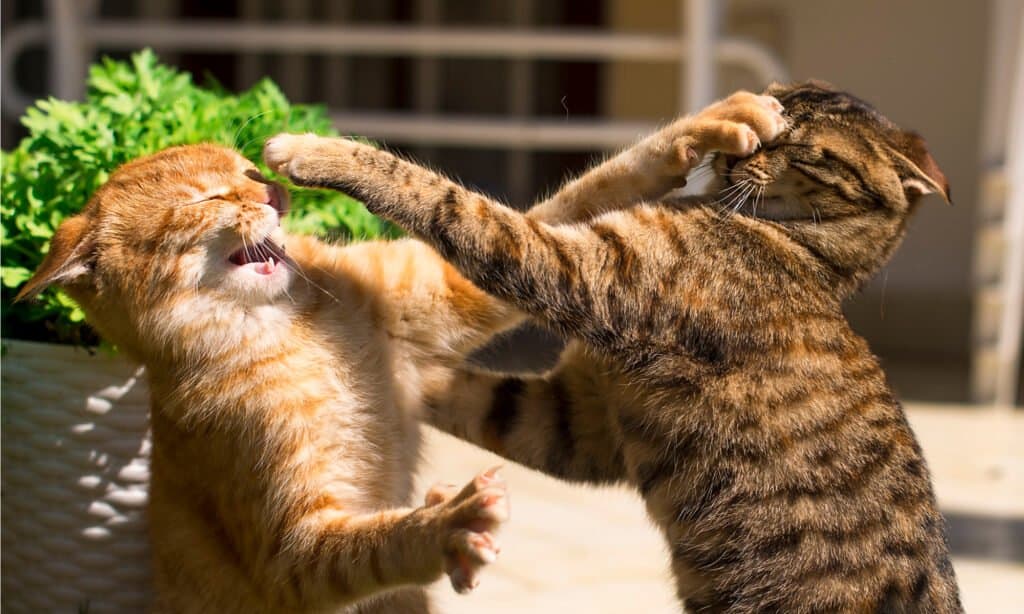
Slapping and swatting are behaviors cats use to establish dominance.
©Mariya Ilmaz/Shutterstock.com
Cats may use their paws to slap or swat at each other to communicate dominance or territorial aggression. If a cat is slapping without their claws, then the behavior could be a part of regular play. However, repeated, forceful slaps with extended claws indicate that the behavior has escalated past playfulness, especially when paired with other aggressive behaviors.
3. Hissing and Growling

Cats hiss or growl to communicate fear and aggression.
©Anna Krivitskaya/Shutterstock.com
While cats use their meows to communicate exclusively with humans, they use other vocalizations to communicate with each other. Cats can generate a low, guttural, growling sound to let other cats know they’re feeling threatened. Cats will escalate to hissing — usually with their teeth bared and ears pulled back — to warn other cats that they are about to attack.
4. Grooming
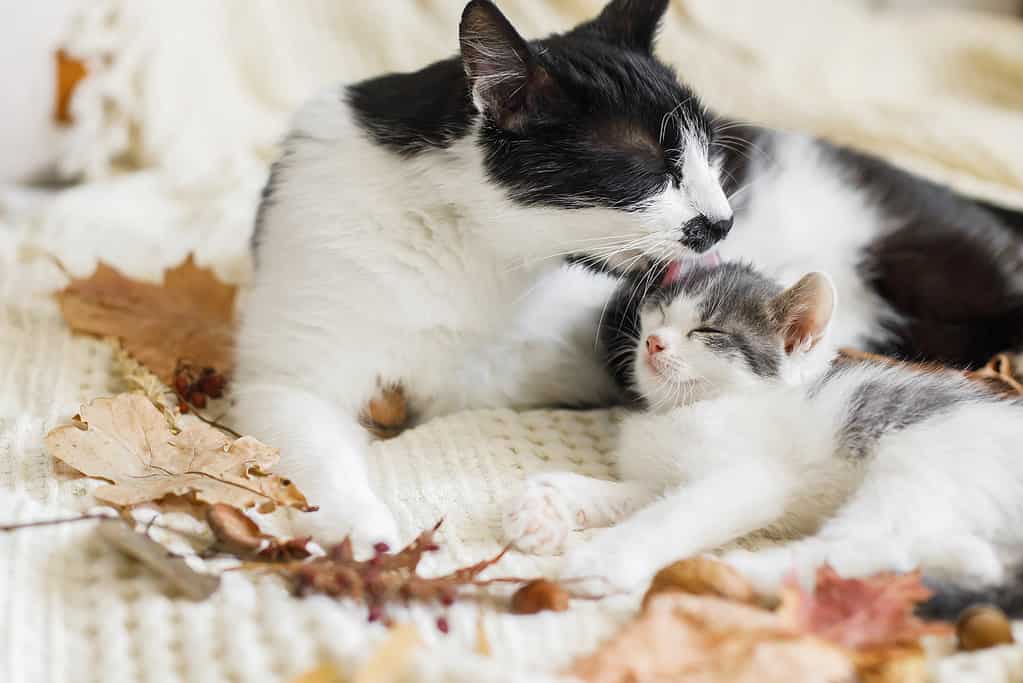
Cats lick each other for grooming and bonding.
©Bogdan Kurylo/iStock via Getty Images
Cats generally spend several hours a day carefully licking and grooming themselves. When cats groom each other, it is generally a show of love and affection. Mother cats lick their kittens after they’re born, and kittens begin to self-groom when they’re around six weeks old. Even cats that aren’t related will groom each other to develop a shared scent and strengthen their bond.
5. Head-Butting and Rubbing
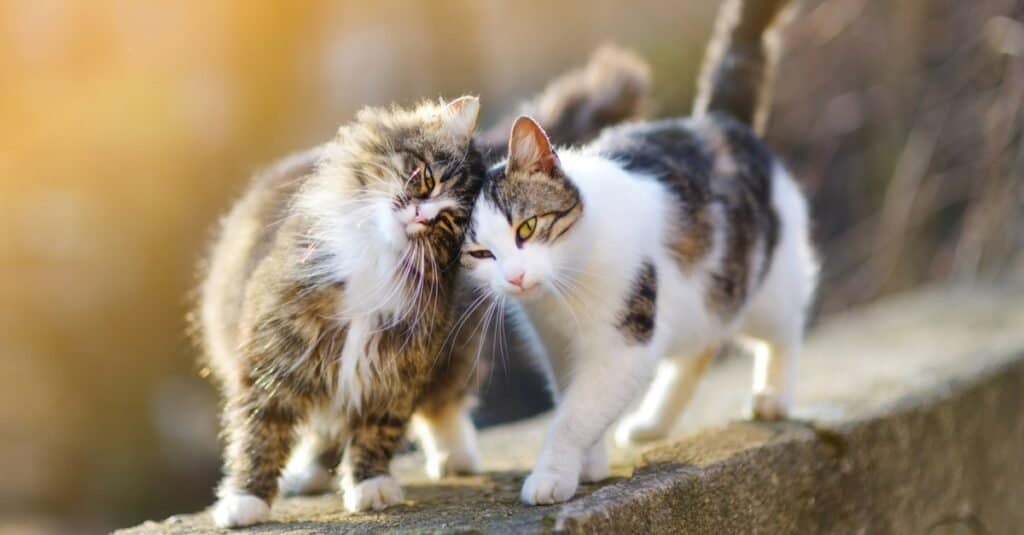
Head-butting is a way for cats to mark their territory with their scent.
©MNStudio/Shutterstock.com
Many cat owners are used to their cats rubbing against their legs or furniture. Cats are highly territorial, and rubbing is a way to mark their territory using scent glands around their faces. When cats rub or head-butt against each other, it can be a friendly greeting or an attempt to mark their territory.
6. Kneading

As kittens, cats knead on their mother to stimulate milk.
©iStock.com/bozhdb
Affectionately known as “making biscuits,” cats knead by pressing their front paws in an alternating pattern into a soft surface. This behavior is apparent in kittens, who knead on their mother to help stimulate her milk production. As adults, cats knead on each other to signal comfort and happiness. However, an unspayed female cat may knead to let nearby male cats know that she’s in heat.
7. Body Language

When threatened, cats will try to make themselves appear larger by adopting a sideways stance and arching their backs.
©Katamount/Shutterstock.com
Although they can’t speak, cats can communicate quite effectively with their ears, eyes, and posture. When a cat has its ears upright and facing forward, it is signaling curiosity and alertness. A cat will relax its ears slightly to the side when it is feeling content or comfortable. However, when a cat swivels its ears down low or flat against its head, it is communicating aggression.
Cats sometimes gaze at people or other cats with their eyes half-closed. This behavior can indicate a range of emotions, from love and contentedness to fear and anxiety. However, if a cat stares at another cat with its eyes wide open, that could be a more certain sign of aggression.
If a cat is feeling threatened by another cat, it may try to make itself look larger by arching its back or standing its fur up on the end. However, some cats choose a different approach to communicate fear and will try to make their bodies as small and low to the ground as possible.
8. Playing vs. Fighting
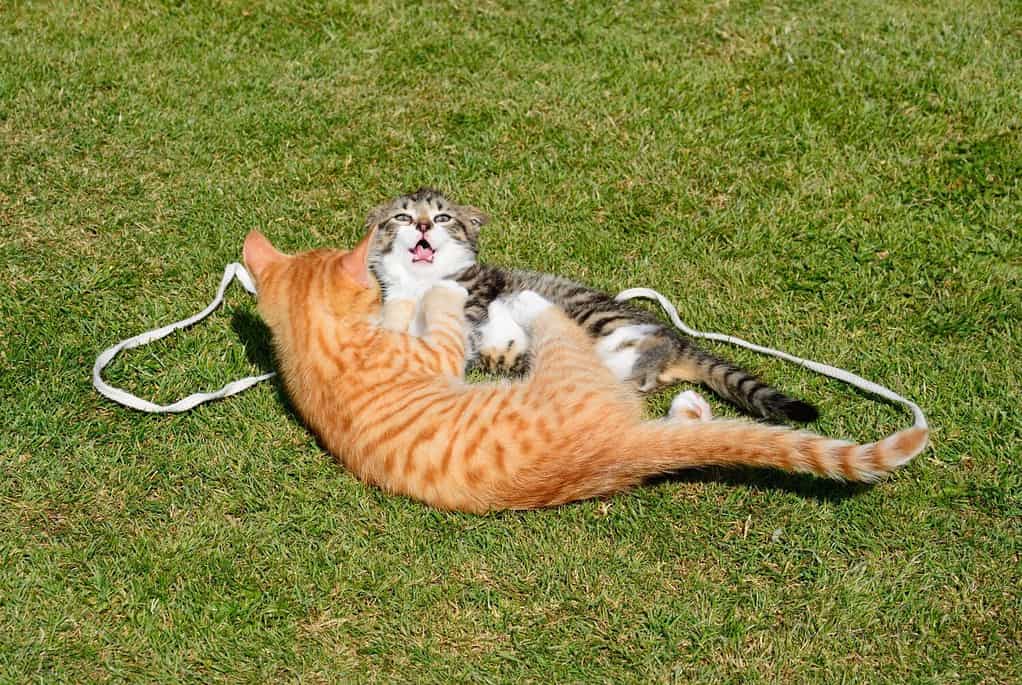
Cats are playful animals, but playtime can escalate to aggression.
©Caron Badkin/Shutterstock.com
When they’re not sleeping or grooming themselves, cats can be highly playful. However, it can be difficult to tell when cats cross the line from playing with each other to fighting. If you own multiple cats or are in the process of introducing cats, keep a close eye on their playtime and be prepared to step in if things get too rough.
If one or both cats shift from having loose, relaxed postures to stiff, tense muscles, then playtime might be shifting to aggression. It is normal for cats to make chirping or trilling sounds while playing, but loud yelps, yowls, or hisses indicate that someone has gone too far.
Observe your cats’ posture, ears, and tails for signs of aggression. If the dynamic shifts away from playfulness, then it’s best to separate the cats while they calm down. To tamp down on aggressive behavior, make sure each cat has its own litter box, food bowl, and space to retreat.
Thank you for reading! Have some feedback for us? Contact the AZ Animals editorial team.

